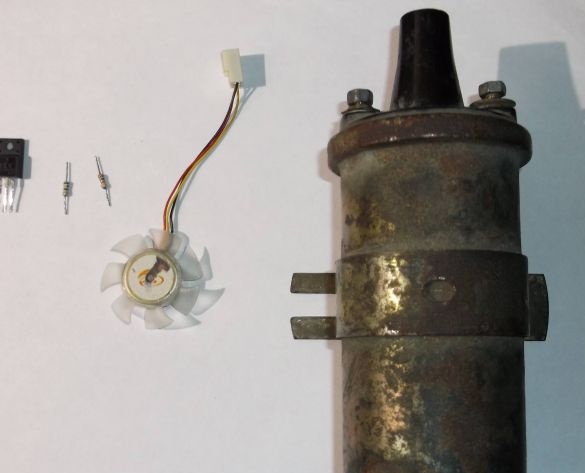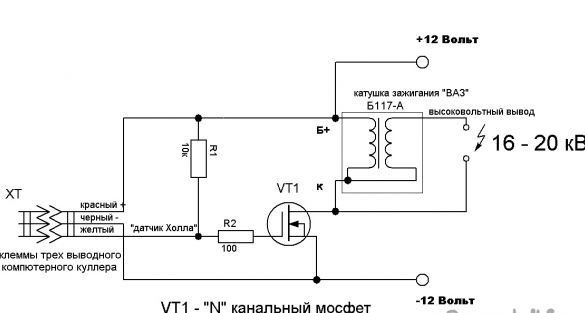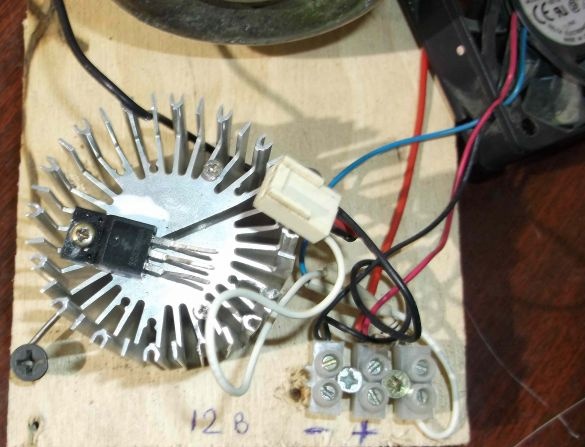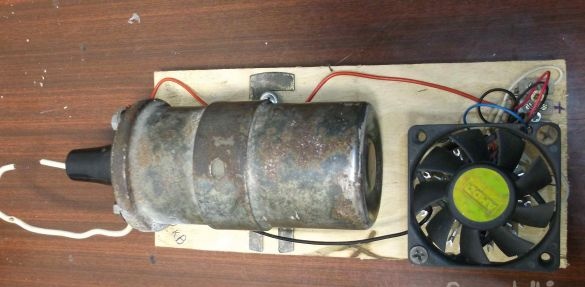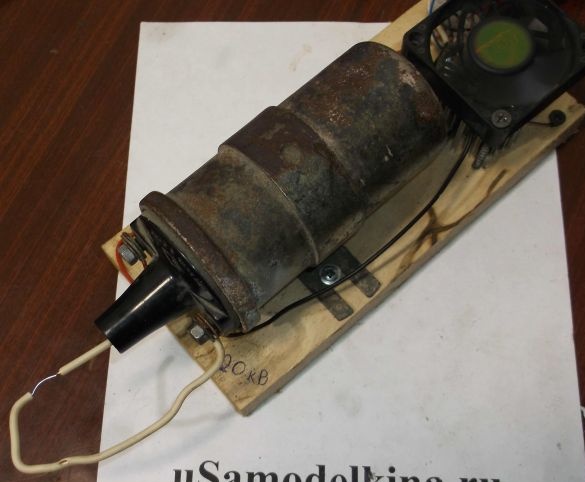Hello everybody! The network has many high-voltage generator circuits that differ in power, in assembly complexity, in price and in the availability of components. This homemade assembled from practically waste parts, anyone can assemble it. This generator was going to, let’s say, for informational purposes and all kinds of experiments with high voltage electricity. The approximate maximum of this generator is 20 kilovolts. Since the mains voltage is not used as a power source for this generator, this is an additional plus from a safety point of view.
In the photo all the necessary parts for assembling a high-voltage generator.
To build, you will need:
VAZ ignition coil
Cooler with Hall Sensor
"N" channel mosfet
100 ohm and 10 kOhm resistors
Connecting insulated wires
Soldering iron
Terminal block (optional)
Mosfet radiator
Several screws
Plywood base for mounting parts
Cooler with Hall Sensor
"N" channel mosfet
100 ohm and 10 kOhm resistors
Connecting insulated wires
Soldering iron
Terminal block (optional)
Mosfet radiator
Several screws
Plywood base for mounting parts
This is a diagram of this generator.
To whom it is interesting I will try to tell in more detail. As a pulse generator, a computer cooler or similar 12 volt cooler is used, but with one condition - it must have an integrated hall sensor. It is the hall sensor that will generate the pulses for the high-voltage transformer, in which, in this case, the ignition coil from the car is used. Choosing a suitable fan is very simple, as a rule, it has three inputs.
The photo shows the presence of three conclusions. The standard colors are red output plus power, black - common (ground) and yellow - output from the hall sensor. When power is supplied to the fan at the output (yellow wire), we obtain pulses whose frequency depends on the speed of the electric motor of this cooler and the higher the voltage, the higher the pulse frequency. The voltage should be increased within reasonable limits - about 12-15 volts, so as not to burn the cooler and the entire circuit. The resulting pulse signal has to be fed to the ignition coil, but it needs to be strengthened.
As a power switch, I used an “N” channel field effect transistor (mosfet) IRFS640A, others with the same parameters would be suitable, or approximate for a current of 5-10 amperes and a voltage of 50 volts for reliability. Mosfets are present in almost all modern electronic schemes, whether it is a computer motherboard or a starting circuit of an energy-saving lamp, which means that there will be no problems finding a suitable one.
The ignition coil from VAZ "classic" B117-A cars has three outputs. The central one is a high-voltage output, “B +” is a positive 12 volt, and the general “K” is probably not marked.
Initially, the circuit consisted of three components: a cooler, a mosfet and a coil, but after a short time it broke, because either the mosfet or the hall sensor failed. The output is the installation of 100 Ohm resistors to limit the inrush current from the hall sensor to the gate, and a 10kΩ pull-up resistor to lock the mosfet in the absence of a pulse.
When assembling the circuit, the transistor should be installed on the radiator, preferably using thermal paste, since the heating during operation is significant.
The connector from the cooler was used as a terminal block for connecting a mosfet. As a result, the need for soldering the transistor has disappeared, to connect or replace it is enough to connect the block to the terminals of the transistor.
The fan was fixed on top of the radiator with two screws. As a result, it turned out that the cooler plays a dual role - as a pulse generator and as additional cooling.
We connect the power of 12-14 volts from the battery and try to work.
For lightning on wood, this unit is certainly weak, but what is high voltage with this homemade product can be estimated.



